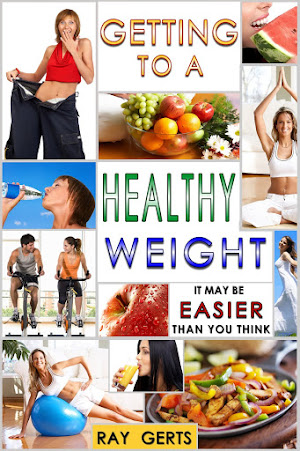Lose weight faster with simple adjustments to your daily routine
“I want to lose weight but no matter how hard I try, I can’t seem to slim down.” Does that complaint sound familiar? If you’re like many frustrated dieters, you’re beginning to think that you’ll never get the body you desire.
But there is hope. If you want to lose weight, simply find out which common weight loss mistakes might be preventing you from getting the results that you want. Then make simple changes to tweak your weight loss plan and slim for good.
Things to Stop Doing if You Want to Lose Weight
Stop choosing the wrong diet. How often have you chosen a diet because it worked for a friend? Perhaps you were inspired by a celebrity spokesperson? A diet might be perfect for someone else, but their needs, their lifestyle, and their food preferences could be completely different from yours.
Do this instead: Ask yourself five important questions about your diet history, medical background, and emotional support. The answers will help you to identify your specific needs as a dieter and help you to choose the best weight loss plan for you.
Stop setting unrealistic goals.
Dieters are often highly motivated and full of excitement at the beginning of their weight loss program. It is often during this phase that they set unrealistic goals for weight loss. But high expectations can cause weight gain when lack of progress leads to lack of motivation.
Do this instead: Learn how to set small goals that you’ll actually reach. These smaller steps provide a roadmap for your weight loss journey. As you reach each small goal you get a boost of confidence and you stay motivated on the way to your ultimate goal.
Stop using “lack of time” as an excuse.
One of the most common barriers to weight loss is the belief that you don’t have enough time. One study found that 41% of women said “lack of time” was the reason that they didn’t eat better and 73% of women said they didn’t exercise because their schedules were too busy. The bottom line is that if you want to lose weight, you have to find a way to make time for healthy activity.
Do this instead: Get out an old-fashioned paper calendar and find windows of time that are not consumed by absolute necessities. Then create a schedule for healthy weight loss activities. Pen in the most important tasks and schedule everything else around them. Don’t be afraid to put other priorities on the back burner or ask for help (see item #4) so that you can take the time you need to make your health a top priority.
Stop isolating yourself.
In a recent interview with Biggest Loser runner-up Hanna Curlee, she said that the most important thing she learned during her successful weight loss experience was to ask for help. “I was ashamed to ask for help,” she said. “I could have called someone and reached out for help, but I thought I didn’t have anyone.” She realized later that she had friends and family who were willing and able to help her through her weight loss journey.
Do this instead: Learn how to get diet support from family and friends. Take the time to identify your needs for yourself and then approach others for help. That way, you’ll be clear about defining specific ways in which they can help. Find friends at work, at the gym, in your neighborhood or even at church.
Stop underestimating your food intake.
Do you really count all of your calories? Remember that even tiny 25-calorie nibbles here and there throughout the day can add up. Snacks count, food from your dining partner’s plate counts, and calories consumed during food preparation count. Your daily caloric intake might be significantly higher than you think.
Do this instead: Use a food tracker. Make your entries more accurate by purchasing an inexpensive food scale. The tool will allow you to report the exact size of each portion you consume.
Stop believing that “healthy” foods will cause weight loss.
Several studies have shown that people are more likely to overeat foods that they perceive to be healthy. One study at the University of Michigan found that when a food was labeled “organic,” dieters ate more of it. The bottom line? Your “healthy” snack may cause unhealthy weight gain.
Do this instead: Ignore front-of-package marketing and get your information from the nutritional facts label. Your favorite foods may contain a few healthy ingredients, but they may be too high in fat or calories to be part of your weight loss plan. Avocados, for example, are full of healthy fat, but are also very high in calories. Either eat them in moderation or trash the foods that are keeping you fat.
Stop sitting all day.
Non-exercise activity thermogenesis, or NEAT, is a fancy term for all of the non-exercise movement that you do every day. It can account for up to 15-30% of your total calorie burn. If you spend your day sitting at a desk or your evenings lying on the couch, the calories you burn from NEAT will be minimal.
Do this instead: Learn how to burn calories without exercise. Boost your NEAT all day long. If you have a desk job, get up every hour and walk to the restroom on a different floor, refill your water, run an errand on foot, or climb the stairs in your office building. If you like watching television at night, fold laundry or dust furniture instead of just lying on the couch.
Stop overestimating your exercise activity.
Many people who want to lose weight join a gym. But you actually have to go to the health club to burn calories. And your workout time is only the time you spend exercising. It should not include the time you spend in the locker room, parking your car, and chatting with friends.
Do this instead: Invest in a heart rate monitor to get a more accurate estimate of your workout time. There are quite a few models on the market, so compare prices to find one that fits your budget. A heart rate monitor not only lets you know how hard you are working, but most models will measure your “time in range” to let you know exactly how many minutes you can count as exercise.
Stop compensating for exercise by eating more.
It is normal for your appetite to increase when you begin to exercise. But one of the most common weight loss mistakes is to indulge in extra snacks and treats as a reward for the workout. But eating those treats can cause weight gain.
Do this instead: Plan a healthy, low-calorie snack to eat right after you exercise. Combine a healthy lean protein with a carbohydrate to satisfy your hunger and replace nutrients lost during the workout. A glass of skim chocolate milk works well and tastes decadent enough to feel like a treat.
Stop expecting major results from minimal change.
There are certain facts about weight loss that smart dieters learn after a while. One of them is that dieting is difficult. Of course, you’ll see ads for popular weight loss pills that claim to help you lose weight without any effort. And many trendy fad diets make the same promises. But those products and plans don’t work.
Do this instead: Embrace the truth that weight loss is hard, but don’t let the difficulty of the process deter you. If you want to lose weight, you can. But it will be uncomfortable. Celebrate small accomplishments to stay focused along the way. For example, if the scale isn’t giving you the weight loss results that you want, then celebrate the fact that you ate a well-balanced diet during the day and remind yourself about the health benefits you gain from eating well. Your exercise plan may not be resulting in weight loss yet, but it may help you sleep better at night and feel better during the day. Look for and acknowledge the little perks along the way.
All these are things we know are wrong for losing weight but we are usually thinking about something else and just do stupid things out of habit. One thing that helped me or reminded me “to eat healthy” was my fitness tracker that I wore on my wrist. It was a constant remember that I had to watch what I ate. A tracker that syncs to your phone is best. You can download a food log on your cell phone and keep track of all the calories you eat all day long. That’s what helped me, a food log so I could check back and see if I made any mistakes.
Look for my podcast by searching “How Bad Do You Want To Lose Weight” on the podcast app that you use. You’ll see a piece of my book cover.
If you really want to lose your body fat look for my e-books at the websites listed below. You’ll get information on Healthy eating, exercise, and diet. Instead of spending hours on the internet reading dozens of posts, you can save time by picking up one of my e-books.
There are two e-books. “How Bad Do You Want To Lose Weight?” is available at all the online bookstores selling for $3.99. Go to any of the websites below and search the title to find my e-book. This book gives you all you need to lose weight without spending money on gym memberships, diet plans, or meal plans. Look for my book. at Amazon.com, bn.com, iBooks, Kobo.com, Scribd.com, or Gardner Books in the U.K.
My new e-book is available on Smashwords.com and other online bookstores. Just type “getting to a Healthy Weight” in the search box at the top of the home page.
/about/GettyImages-533834278-581ceff95f9b581c0b67f46b.jpg)






